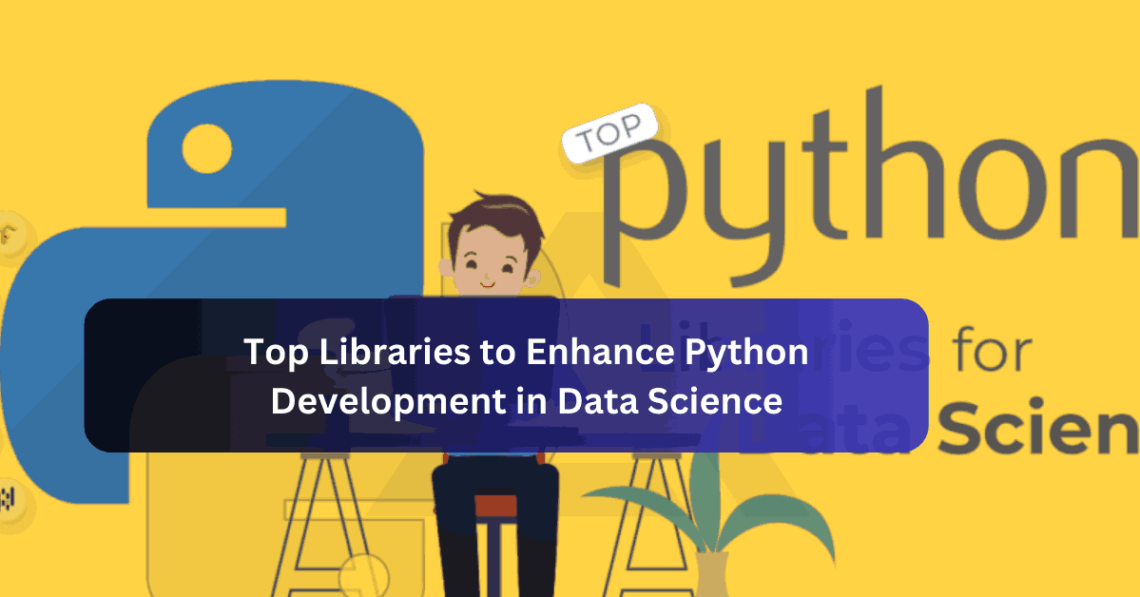
Top Libraries to Enhance Python Development in Data Science
Are you intrigued by the potential of transforming raw data into valuable insights for decision-making and strategic planning? Welcome to the world of data science!
Powered by numerous programming languages, the realm of data science is largely dominated by Python due to its simplicity, flexibility, and powerful package ecosystem.
In this blog, we will dive deep into the top libraries that can significantly enhance Python development in data science and simplify the lives of data scientists, developers and analysts.
Making Sense of Python Libraries
Before we delve into the top libraries, it’s important to understand what Python libraries are and how they contribute to data science. Python is complemented by an extensive standard library that includes modules for specific tasks. Libraries are collections of functions and methods that allow you to perform many actions without writing your code.
Matplotlib – Visualizing Data
Matplotlib is arguably the most popular Python library for data visualization, offering the ability to create a wide variety of plots and charts.
This wide array of Python libraries provides a robust foundation for data scientists to create, analyze, and visualize complex datasets. Combined with effective Python development outsourcing, these libraries can tremendously accelerate the data science project development cycle and enhance productivity.
NumPy – Numerical Python
NumPy is one of the fundamental packages for numerical computing in Python. It offers support for arrays, matrices, and a host of mathematical functions to operate on these data structures, making it easier to handle numerical data.
Essentially, NumPy allows for high-performance scientific computing and data analysis. This powerful library further forms the base for many other libraries, showing the widespread application of NumPy in data science.
Pandas – Data Manipulation and Analysis
Pandas provides high-level data manipulation tools built on the NumPy foundation. It is the go-to library for analysts to clean, transform, manipulate, aggregate, and visualize data.
Ranging from simple to complex data sets, pandas is highly flexible and powerful. It offers critical components missing in NumPy, especially for working with missing data, and has robust IO tools for reading from various sources.
A Fascinating Contrast with PHP
While Python stands out in data science, other programming languages have their specific applications too. For instance, the PHP language is a popular choice for web development. Even though it’s not typically used for data science tasks, it’s still valuable to have in your development team.
Comparing Python and PHP can help us appreciate the former’s suitability for data science and why the latter is more prevalent in web development. Python utilizes vast amounts of data and complex functional algorithms, while PHP is equipped to create dynamic and interactive web pages, offering a more user-friendly interface.
Python’s Strengths for Data Science
Python’s syntax is simple and consistent, making it easy for developers to write and for machines to read. Its libraries cater specifically to data manipulation and analysis, making the process much more streamlined.
Python is renowned for its readability and ease of learning, especially for beginners. Its close resemblance to everyday English, extensive support, vast libraries, and user-friendly data structures make Python a preferred choice for many in the data science field.
PHP’s Strengths for Web Development
When it comes to web development, PHP also shines in its own right. It integrates well with HTML and offers strong support for a variety of databases, complemented by a wide array of PHP development services.
Conclusion
Python, with its impressive suite of libraries specifically designed for data science tasks such as NumPy, pandas, and Matplotlib, provides an unmatched ecosystem for data analysis and computational science.
However, it’s also essential to recognize the unique strengths of other languages like PHP for web development tasks. As you navigate the labyrinth of programming languages, remember that the choice of language or library should be dictated by the needs and constraints of your specific application or project.
You May Also Like

How To Get Real Likes on Instagram With LikesGenre App 2022
October 14, 2022
Common Writing Styles for Writing Arabic
February 8, 2024

